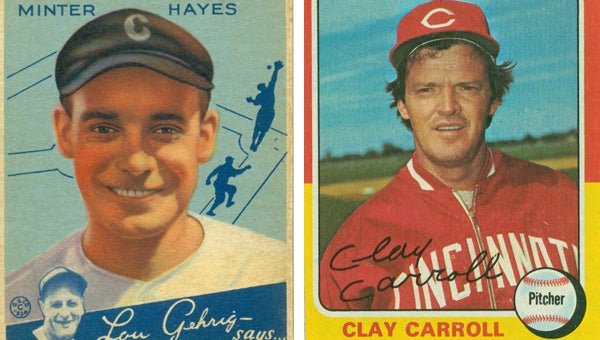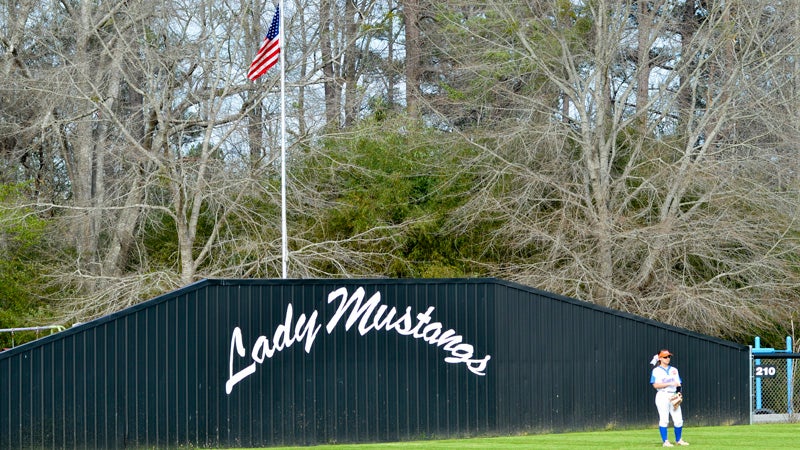Hayes, Carroll preeminent parts of county’s baseball tradition
Published 3:28 pm Friday, September 25, 2015

Baseball legends: Jackie Hayes (left), shown in a 1932 baseball trading card, and Clay Carroll, shown in a 1975 card are Chilton County natives who enjoyed distinguished careers in professional baseball. (Contributed photos)
By Billy Singleton | Special to the Advertiser
Earl Weaver, legendary manager of the National League Baseball Baltimore Orioles, called baseball the greatest of all sports because, “You can’t sit on a lead and run a few plays into the line and just kill the clock. You’ve got to throw the ball over the plate and give the other man his chance.”
Most Americans would agree as the game of baseball is still considered our national pastime, and we associate our most cherished traditional values “as American as mom, apple pie and baseball.”
Long before the increased popularity of professional football and basketball, our sports heroes were baseball players. Back in the day, describing someone as a “great ballplayer” implied a batting average above .300, a 90 mile-an-hour fastball or more than 20 stolen bases in a year.
In small towns and large cities across the country, young men spent their summers chasing fly balls, fielding grounders or trying to stretch a single into a double.
Baseball is certainly no stranger to Chilton County. From the community league teams of the Depression Era to the T-ball, Little League and high school teams of today, Chilton County has amassed an incredible legacy in the sport of baseball.
For communities in Chilton County, state championships and victories in area tournaments constitute bragging rights and are proudly proclaimed on stadium scoreboards and city welcome signs.
Whenever die-hard fans gather in local coffee shops to discuss the prospects of the coming season or reminisce about games past, the names of two legends of Chilton County baseball, Jackie Hayes and Clay Carroll, always seem to become the focal point of the conversation.
Born 35 years apart, Hayes and Carroll shared a common bond in their love of baseball and possessed talent that elevated each from their humble beginnings to be considered among the best in the elite world of professional sports.
Minter Carney “Jackie” Hayes was born on July 19, 1906, in Clanton. During high school, Hayes quickly proved his natural athletic ability by lettering in all sports at his alma mater, Chilton County High School.
Following graduation in 1925, Hayes attended the University of Alabama, where he played second base for the Crimson Tide.
After two years of college baseball, Hayes was offered the fabulous salary of $25,000 a year to play for the Washington Senators professional baseball team.
On Aug. 5, 1927, Hayes made his professional debut against the St. Louis Browns. During five years in Washington, the right-handed Hayes established a reputation as consistent fielder who had a special talent for turning double plays.
In 1932, Hayes was traded to the Chicago White Sox, where he spent the remainder of his nine years as a professional athlete. As a member of the White Sox, Hayes played against some of the greatest names in baseball including Lou Gehrig, Dizzy Dean and the “Yankee Clipper,” Joe DiMaggio.
During the 1937 season, Hayes led major league baseball in double plays. Former Washington teammate and Baseball Hall of Fame inductee Joe Cronin called Hayes the “finest double-play second baseman in the league.”
Hayes also distinguished himself in 1940 by being the first player in the history of professional baseball to wear a batting helmet during a game. Hayes had designed and constructed the protective headgear himself.
In 1940, Hayes began suffering the debilitating effects of glaucoma, first losing vision in his right eye. Although he managed to play 18 games that year, the effects of the disease ended his major league career.
Three years later, Hayes lost the vision in his left eye as well. Refusing to let his loss of sight defeat him, Hayes approached life after baseball with the same level of competitiveness that made him a success in professional sports.
Following his retirement from baseball, Hayes returned to Chilton County and was soon elected to the office of tax collector.



